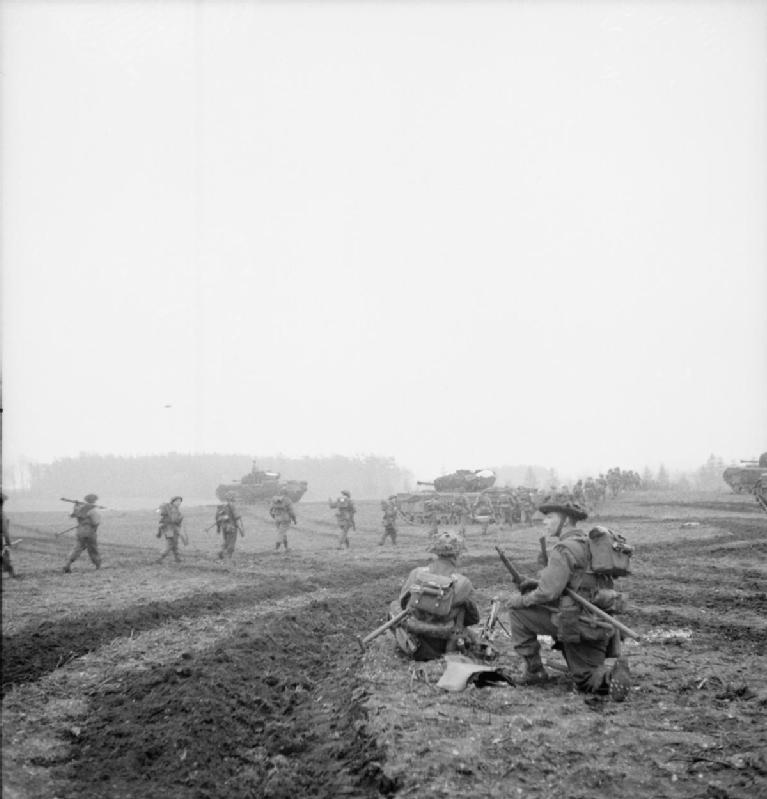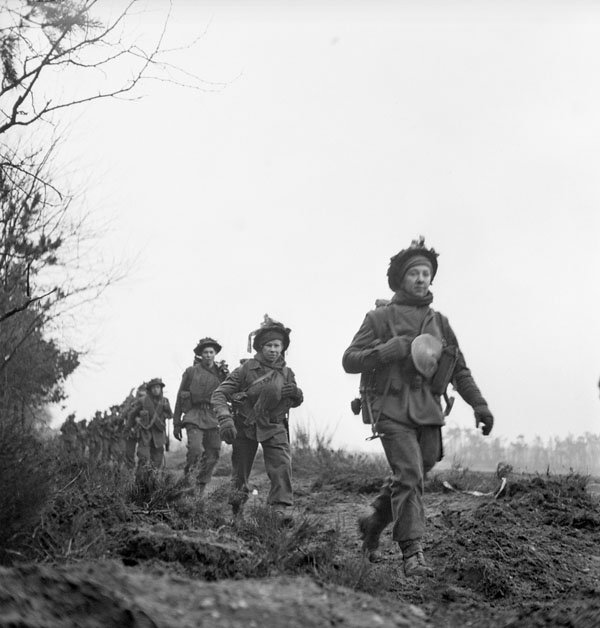 WW2 History of Europe
ww2 history
WW2 History of Europe
ww2 history
2nd (Reconstituted) Battalion The Argyll and Sutherland Highlanders H Hour for the infantry attack
Listing Details
- Veritable February 8- March 1
Description
H Hour for the infantry attack was 10:30 a.m. The covering barrage was to begin slowly on the opening line at 9:20, thickening up to its full intensity from 10 o'clock onwards.
At H Hour it would begin to move. Smoke-shells mixed with the high explosive built up a protective white screen which blanketed the north-western edge of the Reichswald and effectively concealed the assault battalions of four divisions as they emerged from the woods behind Groesbeek and advanced down the forward slopes to their start-lines.
The barrage, which was 500 yards in depth, advanced in blocks of 300 yards every twelve minutes. The same yellow smoke-signal one minute before the end of each block enabled the attacking troops to move with confidence immediately behind the curtain of fire and thereby reap the maximum advantage. At 10:29, as a line of yellow smoke-shells indicated the final minute before the barrage lifted, infantry and tanks began passing through the 2nd Cnd Division forward defensive line to advance into Germany.
Picture: the 2nd Argyll & Sutherland Highlanders moving forward to the start-line on 8th February in the attack towards the Kranenburg - Frasselt line. Churchill tanks of the 3rd Scots Guards are in support (IWM BU 1716).
Pictures 2: Soldiers of the 15th Scottish Division, probably 2nd Argyll & Sutherland Highlanders, moving up to the start-line in the morning of 8th February 1945


